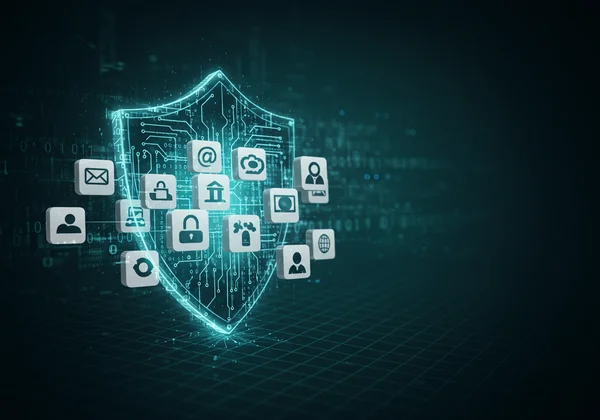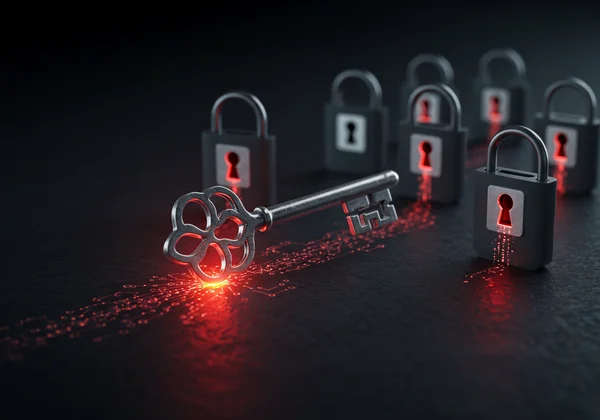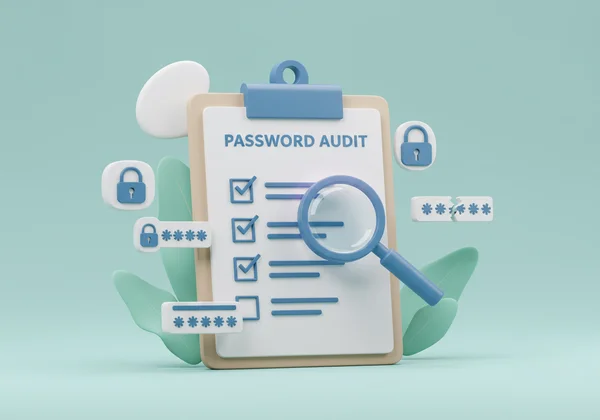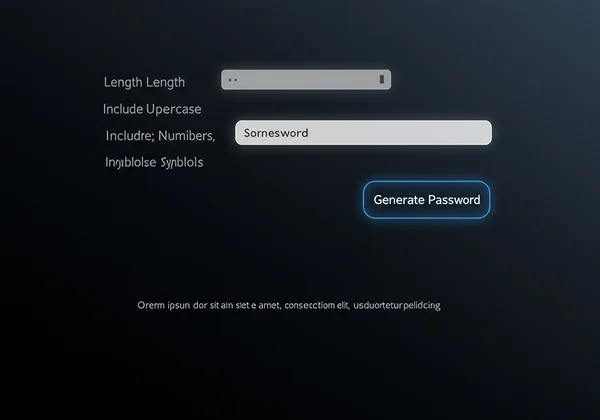Password Security Audit: Strengthen Accounts with Our Online Password Generator
Feeling overwhelmed by password security? You're not alone. In a world of endless online accounts, managing your digital safety can feel like a full-time job. But what if you could significantly boost your defenses in just 15 minutes? This guide provides a simple, actionable plan to conduct a personal password security audit. We’ll help you identify weak spots and fix them immediately. If you've ever asked yourself how to secure my online accounts?, you're in the right place to take control, even if you're not a tech expert. Strengthening your digital life is easier than you think, and it starts with knowing where you stand. The first step towards better protection is learning how to create secure passwords that work for you.

Check My Password Security: Why an Audit Matters
A password security audit is like a regular health checkup, but for your online identity. It's a proactive process of reviewing your accounts and passwords to find vulnerabilities before a cybercriminal does. In today's digital landscape, data breaches are common, and the information stolen from one site is often used to attack accounts on another.
Ignoring your digital security is like leaving your front door unlocked. While you might feel fine now, you could be unknowingly exposed to risk. By dedicating just a few minutes to an audit, you transform from a potential victim into a prepared defender. This isn't about becoming a cybersecurity expert; it's about practicing good cybersecurity hygiene to protect your personal information, finances, and online reputation.
The Hidden Dangers of Weak & Reused Passwords
The biggest threat to most people's online security isn't a sophisticated hacker in a dark room; it's the habit of using simple, easy-to-guess, or reused passwords. When you use the same password for your email, social media, and online shopping, you create a single point of failure. If a hacker cracks that one password—perhaps from a less secure forum you once used—they suddenly have the key to your entire digital kingdom.

This is the basis of a "credential stuffing" attack, where automated bots take lists of stolen usernames and passwords and try them across thousands of websites. Your password might be strong on its own, but if it's reused, its strength is irrelevant. A weak passwords strategy is a welcome mat for attackers, making it imperative to ensure every critical account has a unique and robust password.
How to Spot the Red Flags in Your Digital Life
Recognizing the warning signs of poor password habits is the first step toward fixing them. These red flags are common but dangerous practices that significantly increase your risk of being compromised.
Take a moment to ask yourself if any of these apply to you:
- Using Personal Information: Is your password a combination of your pet's name, your birthday, or your street address? This information is often publicly available and the first thing attackers will try.
- Sequential or Common Phrases: Passwords like "12345678" or "password123" are notoriously weak and can be cracked in seconds.
- Reusing Passwords: Do you use the same or a slightly modified password across multiple important websites?
- Short Passwords: Are your passwords less than 12 characters long? Shorter passwords are much easier to crack with modern technology.
- No Two-Factor Authentication (2FA): Are your most important accounts (like your primary email) only protected by a password?
If you answered "yes" to any of these, don't worry. Acknowledging these habits is the first crucial step in your password health check.
Your Personal Password Health Check: A Step-by-Step Guide
Ready to get started? This three-step process is designed to be quick and effective. Grab a notepad (for temporary notes you'll destroy later) or simply make a mental list as you go. The goal is to identify your biggest risks so you can prioritize fixing them.

Step 1: Identify Your Most Critical Accounts
Not all online accounts are created equal. A compromised social media account is an inconvenience, but a compromised primary email or bank account can be a disaster. The first step in your audit is to identify your tier-one, critical accounts.
These typically include:
- Primary Email Account: This is the master key. It's used for password resets for nearly all your other accounts.
- Financial Accounts: Online banking, investment platforms, and payment services like PayPal.
- E-commerce Sites with Stored Payment Info: Amazon, eBay, and other retailers where your credit card is saved.
- Work-Related Accounts: Company email, cloud storage, and project management tools that contain sensitive data.
- Password Manager: If you use one, this is your most critical account of all.
Focus your energy on securing these high-value targets first.
Step 2: Review Password Strength & Uniqueness
Now, go through the list of your critical accounts and honestly assess the password for each one. You don't need to remember the exact password, just its characteristics. Is it long (ideally 16+ characters)? Does it mix uppercase letters, lowercase letters, numbers, and symbols? Most importantly, is it unique to that single account?
If you find yourself using the same password for your email and your banking, that's your top priority to fix. This is where a reliable strong password generator becomes an essential tool. It eliminates the guesswork and human tendency to create predictable patterns, ensuring your password strength is at its maximum.
Step 3: Check for Two-Factor Authentication (2FA) Status
A strong password is your first line of defense, but two-factor authentication is your powerful backup. 2FA requires a second piece of information—usually a code from your phone—in addition to your password to log in. This means that even if a criminal steals your password, they still can't access your account without physical access to your device.
For each of your critical accounts, check your security settings to see if 2FA is enabled. If it isn't, turn it on immediately. Prioritize authenticator apps (like Google Authenticator or Authy) over SMS-based codes, as they are generally more secure.
How to Secure My Online Accounts: Actionable Fixes
Completing the audit is half the battle. Now it's time to take action and fortify your defenses. The following steps will guide you through fixing the vulnerabilities you've just uncovered, transforming your digital security from weak to robust.
Creating Strong Passwords with an Online Password Generator
One of the most effective actions you can take is to replace every weak or reused password with a strong, unique one. Forget about trying to invent a clever-but-memorable password. The smartest and most secure method is to use a password generator.

Our online password generator is built with your security and privacy as the top priority. A key feature is that it operates entirely on the client-side. This means the password is created directly in your browser on your computer; it is never sent to our servers, and we never see or store it. This commitment to privacy makes it a trustworthy tool for creating the credentials that protect your most sensitive data. Simply set your desired length and character types, and let the tool generate a password that is both random and strong.
Leveraging Password Managers for Effortless Security
At this point, you might be wondering, "How am I supposed to remember dozens of long, random passwords?" The answer is: you don't have to. Password managers are secure digital vaults that store all your passwords for you. You only need to remember one strong master password to unlock the vault.
When you need to log in to a site, the password manager can automatically fill in your credentials. It's the perfect partner for a password generator.
- Use a custom password generator to create a highly secure password.
- Save that new password in your password manager.
- Let the manager handle the rest.
This combination gives you the best of both worlds: unbreakable passwords and effortless access.
Implementing or Upgrading Your Two-Factor Authentication
For every critical account where 2FA was turned off, go into the security settings and enable it now. This is an essential step for protecting your most important assets online.
When given the option, always choose an authenticator app over SMS text messages. While SMS is better than nothing, it's vulnerable to "SIM-swapping" attacks where a criminal tricks your mobile provider into transferring your phone number to their device. Authenticator apps generate codes locally on your device, making them immune to this type of attack and a much more secure method for two-factor authentication.
Your Next Steps to a Safer Digital Life
Well done! By completing this 15-minute audit and taking these corrective steps, you've made a massive leap forward in your personal online security. You've identified your risks, patched the vulnerabilities, and built a system for maintaining strong defenses moving forward.
Remember, good security is an ongoing practice, not a one-time fix. Set a reminder to perform this password health check every six months to a year. Your digital life is now significantly safer. Continue this positive momentum by exploring how a passphrase generator can create even more memorable yet secure passwords for certain accounts. Take the next step and visit our online password generator to create your first truly strong password.
Frequently Asked Questions About Password Security
How to create a strong password?
A strong password has three key characteristics: length, complexity, and uniqueness. It should be at least 16 characters long, include a mix of uppercase letters, lowercase letters, numbers, and symbols, and never be reused across different sites. The easiest and most secure way to achieve this is by using a trusted online tool.
How long should a password be?
While 12 characters is often cited as a minimum, modern cybersecurity experts recommend a length of 16 characters or more for critical accounts. Every additional character exponentially increases the time and resources required for a brute-force attack to succeed, making longer always better.
Are online password generators safe?
This is a critical question. The safety of an online password generator depends entirely on how it generates the password. The safest option is a client-side password generator. This means the password is created locally in your browser and is never transmitted over the internet or stored on a server. You should be cautious of any service that doesn't explicitly state its client-side-only policy.
What is a good password?
A good password is one that a computer can't guess but you don't have to remember. It's a long, random string of characters (e.g., 8$tG#k!v@zP4qW7r) generated by a secure tool and stored safely in a password manager. It is never based on personal information and is used for only one account.